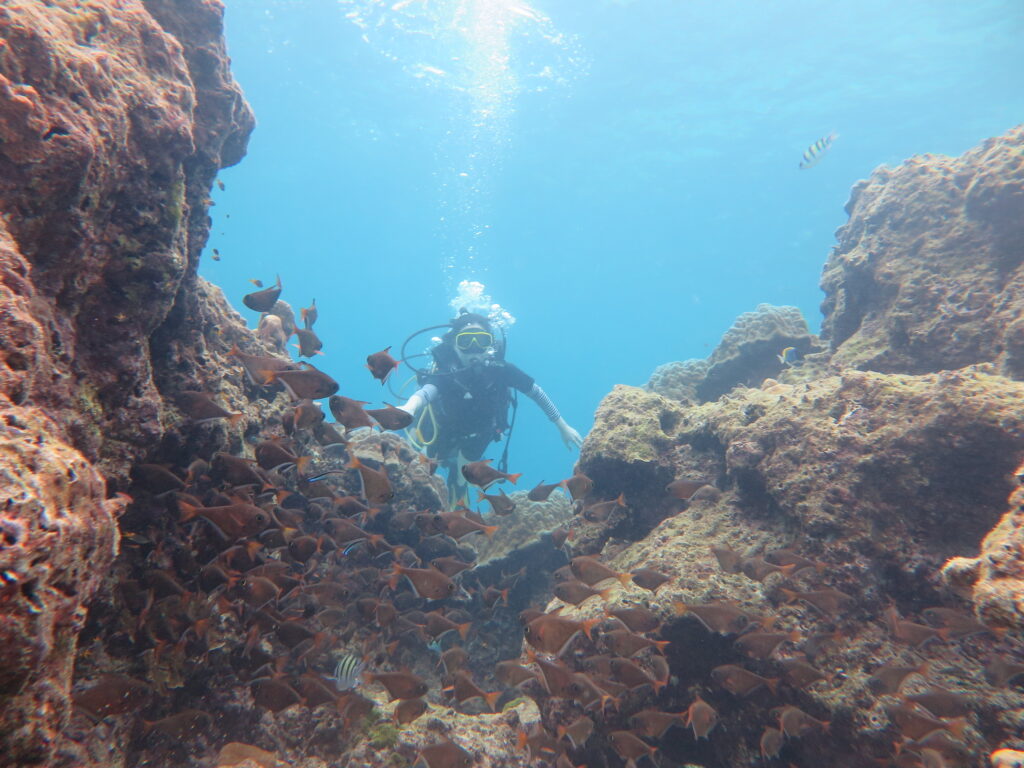What is Entry when Scuba Diving?

Entry techniques in scuba diving are critical for ensuring diver safety and environmental preservation. Proper entry methods allow divers to enter the water with minimal risk of injury and help protect marine environments from damage. Understanding and mastering various entry techniques is essential for divers of all skill levels, as it impacts both the initial moments of the dive and the overall diving experience.
What is a Dropoff?

A dropoff in scuba diving refers to a steep underwater slope or cliff that descends sharply from a relatively shallow area to much deeper waters. These underwater geological features are significant for divers due to their dramatic landscapes and the rich marine life they often host. Dropoffs are found in various parts of the world and are treasured for their breathtaking views and the unique diving experiences they offer. These areas are not only visually striking but also ecologically vital, serving as habitats for a wide variety of marine species.
What is No Mount Diving?

No mount diving is a specialized form of scuba diving that involves the diver carrying tanks and equipment separately from their body, usually holding or towing them instead of mounting them on a harness or backplate. This technique provides exceptional flexibility and maneuverability, particularly in environments that are too restrictive for traditional scuba gear setups. Originating from the need to navigate through tight underwater spaces, no mount diving has become a valuable technique in underwater exploration and technical diving circles, especially among cave divers and those exploring complex underwater structures.
What is Wall Diving?

Wall diving is a mesmerizing and unique form of scuba diving, where enthusiasts descend alongside vertical geological formations, typically in locations where the ocean floor abruptly falls away into deep water. These formations, often cliffs, rock walls, or coral reefs, run vertically, extending from shallow to significant depths. Wall diving offers divers the unique opportunity to explore a dramatically different underwater environment, offering a vast array of marine life and breathtaking views.
What is Recreational Scuba Diving?

Recreational scuba diving is a popular underwater activity enjoyed by millions of people around the world. It allows individuals to experience the underwater environment firsthand, encountering marine life and underwater landscapes that are typically inaccessible. Unlike commercial or military diving, which focuses on tasks such as underwater construction or defense, recreational scuba diving is primarily for enjoyment and adventure. It involves using a self-contained underwater breathing apparatus (scuba) to breathe underwater, enabling divers to spend extended periods submerged. This activity has grown significantly in popularity due to its appeal to adventurers and nature enthusiasts alike.
What is a Blue Hole?

What is a Blue Hole? A blue hole is a captivating underwater geological feature that intrigues scientists, divers, and marine enthusiasts alike. These large marine caverns or sinkholes are open to the surface and often grant access to submerged cave passages, providing unique environments for marine life to thrive. Blue holes are found in various […]
